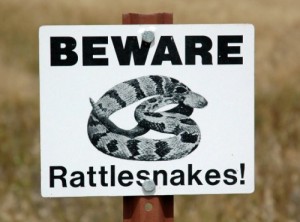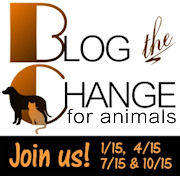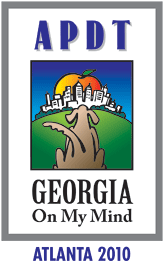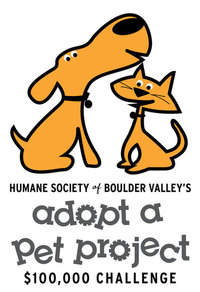Three cups of calming Yogi tea and two yellow-labeled bottles of  Rescue Remedy later, I thought I’d feel calmer. I don’t. My fingers sit paralyzed on the keyboard. I stare at the blank space beneath “Add New Post.” I don’t want to think about this week’s Never Shock a Puppy topic–rattlesnakes.
Rescue Remedy later, I thought I’d feel calmer. I don’t. My fingers sit paralyzed on the keyboard. I stare at the blank space beneath “Add New Post.” I don’t want to think about this week’s Never Shock a Puppy topic–rattlesnakes.
I’m terrified of encountering a rattlesnake. Not for myself. I’m scared, no, make that petrified, for Sadie. I want to protect her from every awful thing and the mere thought her being bitten wrings my stomach like an old rag wet with acid. I reach for a distraction. My current New Yorker falls open to “The Philosophy of Procrastination.”
I slip “Through a Dog’s Ear–Music for the Canine Household, Volume 1” into my laptop and try again.
Boulder is rattlesnake country. I know this and I know dogs who have been bitten, like Roxanne’s sweet Lilly. And, I know I have been very lucky. In 35 years of living and recreating in the foothills of the Rocky Mountains I have not encountered one rattlesnake. Neither have any of my dogs. But, I hear stories all the time!
To date I’ve been practicing a natural method, I guess you could call it, of rattlesnake avoidance. Luck. Common sense. Training.
Fortunately for us, rattlers haven’t taken up residence near our house even though we live in the foothills.
I also keep my ear to the ground, so to speak, and stay away from hiking trails that are known to be habitats for the reptiles. True, we’re missing some beautiful walks, but I’m just not into taking the risk. And, Sadie and I don’t hike when it’s warm not only because that’s when rattlers are likely to be catching rays, but because Sadie is extremely heat sensitive. Why take her on a hike when she’s just going to be hot and miserable?
When we do go for off-leash hikes I call Sadie away from investigating rock formations. All kinds of creepy crawly things live in, under and around rocks not to mention rattlesnakes. We also try to avoid tall grasses. That’s sometimes a little more difficult. In any case, “Leave it!” has become our cue to snappily turn your head and body away from the ‘whatever’ and come to me immediately!
Like natural birth control, natural rattlesnake avoidance works until it doesn’t.
So, I’ll ask myself the same question I’m asking you: “Would I ever consider shocking Sadie to teach her aversion to rattlesnakes?”
No. I wouldn’t. Why? Well, I’ll be honest with you, if she was a bolder, bomb proof dog, confident dog, I might. “Might,” I said. A reward-based trainer I greatly respect told me she’d consider using such an approach with the ‘right’ dog and with an over-the-top expert in training rattlesnake aversion using a shock collar. As with most professions, there are lots of ‘professionals’ but very few awesomely excellent ones.
Even with the right dog and trainer, though, so much still can go wrong. The dog might learn to avoid rattlesnakes during shock collar training but not generalize that learning to the real world of alien encounters of the reptile kind. The dog might associate the shock with something other than the smell, look, or sound of a rattlesnake–who knows what? Great. So now we have a dog with a new phobia that has nothing to do with rattlesnakes. I could go on, but you get the idea.
Another precaution against snake bites is rattlesnake vaccine which, at best, can buy you a little time. In addition to the risks inherent in vaccines in general there are particular issues with rattlesnake vaccine. Like there are different strains of flu, there are different kinds of rattlesnakes. So, just as we can get a flu shot and still come down with the flu because we catch a strain for which we didn’t develop anti-bodies from the vaccine, so our dog can be bitten by a rattlesnake whose venom is different from that for which she produced anti-bodies as a result of being vaccinated. Also, even after being vaccinated, our dog still might be overwhelmed by the venom injected by the snake. Vaccinated or not, if your dog is bitten you MUST transport her to a vet that has rattlesnake antivenin ASAP. You can read what UC Davis has to say about rattlesnake vaccine at their website: UC Davis VMTH Canine and Feline Vaccination Guidelines (Revised 11/09). You’ll need to scroll down to the section on snake vaccine.
So for now I’ll continue ameliorating and balancing the relative risks of my options. I did call our veterinarian today to see if she had the vaccine so I would know if I had the choice to have Sadie vaccinated or not. They do. I’m not. Considering my track record to date, I’m going to keep on keepin’ on with our natural approach to rattlesnake aversion. Here, though, is my fondest, if impossible, wish–that no dog ever, anywhere suffers a rattle snake bite.
 This post is part of the Never Shock a Puppy Campaign.Please click on the bright green and blue image to visit the Never Shock A Puppy blog and leave a comment before midnight MDT, Sunday, October 17. You’ll be entered into a contest to win great prizes including a gift certificate from K9Cuisine and a free training session with a reward-based trainer in your area!
This post is part of the Never Shock a Puppy Campaign.Please click on the bright green and blue image to visit the Never Shock A Puppy blog and leave a comment before midnight MDT, Sunday, October 17. You’ll be entered into a contest to win great prizes including a gift certificate from K9Cuisine and a free training session with a reward-based trainer in your area!
Tags: CU Davis, CU Davis Vaccination, E collar, Electric shock collar, Fearful dogs, Never shock a puppy, Rattlesnake, Rattlesnake antivenin, Rattlesnake aversion training, Rattlesnake vaccine, Shock collar
 Animals. Check out my post about the Humane Society of Boulder Valley: 652 More Lives Saved and Counting!
Animals. Check out my post about the Humane Society of Boulder Valley: 652 More Lives Saved and Counting! Grandin, and Alexandra Horowitz! Go here to see the entire lineup and read their biographies. I’ll be blogging from the conference, I hope. I say ‘hope’ because I might not have time with so much going on. But, if you don’t hear from me while I’m at the conference, I’ll tell you about my experiences when I return.
Grandin, and Alexandra Horowitz! Go here to see the entire lineup and read their biographies. I’ll be blogging from the conference, I hope. I say ‘hope’ because I might not have time with so much going on. But, if you don’t hear from me while I’m at the conference, I’ll tell you about my experiences when I return.











